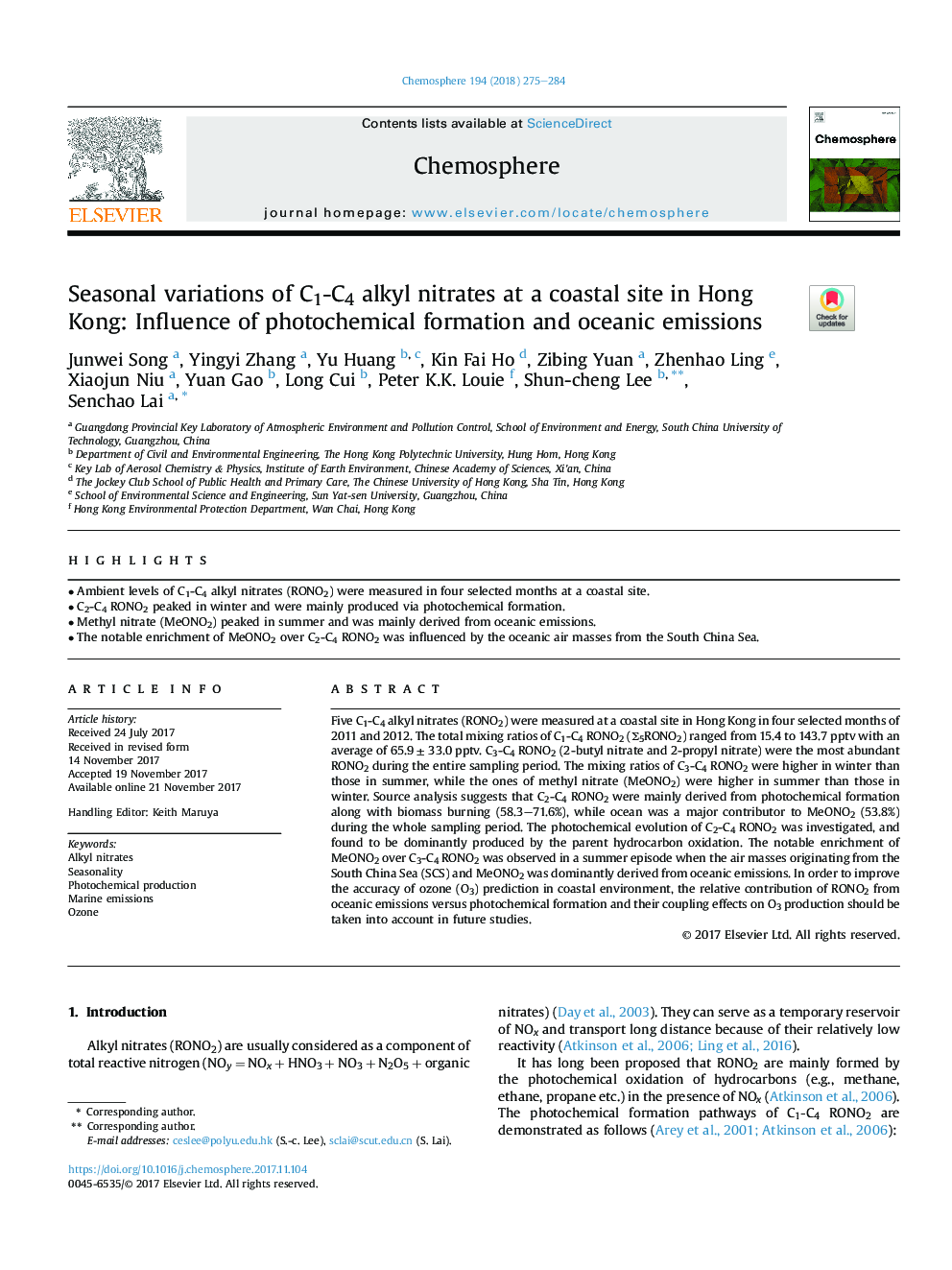| Article ID | Journal | Published Year | Pages | File Type |
|---|---|---|---|---|
| 8852391 | Chemosphere | 2018 | 10 Pages |
Abstract
Five C1-C4 alkyl nitrates (RONO2) were measured at a coastal site in Hong Kong in four selected months of 2011 and 2012. The total mixing ratios of C1-C4 RONO2 (Σ5RONO2) ranged from 15.4 to 143.7 pptv with an average of 65.9 ± 33.0 pptv. C3-C4 RONO2 (2-butyl nitrate and 2-propyl nitrate) were the most abundant RONO2 during the entire sampling period. The mixing ratios of C3-C4 RONO2 were higher in winter than those in summer, while the ones of methyl nitrate (MeONO2) were higher in summer than those in winter. Source analysis suggests that C2-C4 RONO2 were mainly derived from photochemical formation along with biomass burning (58.3-71.6%), while ocean was a major contributor to MeONO2 (53.8%) during the whole sampling period. The photochemical evolution of C2-C4 RONO2 was investigated, and found to be dominantly produced by the parent hydrocarbon oxidation. The notable enrichment of MeONO2 over C3-C4 RONO2 was observed in a summer episode when the air masses originating from the South China Sea (SCS) and MeONO2 was dominantly derived from oceanic emissions. In order to improve the accuracy of ozone (O3) prediction in coastal environment, the relative contribution of RONO2 from oceanic emissions versus photochemical formation and their coupling effects on O3 production should be taken into account in future studies.
Related Topics
Life Sciences
Environmental Science
Environmental Chemistry
Authors
Junwei Song, Yingyi Zhang, Yu Huang, Kin Fai Ho, Zibing Yuan, Zhenhao Ling, Xiaojun Niu, Yuan Gao, Long Cui, Peter K.K. Louie, Shun-cheng Lee, Senchao Lai,
